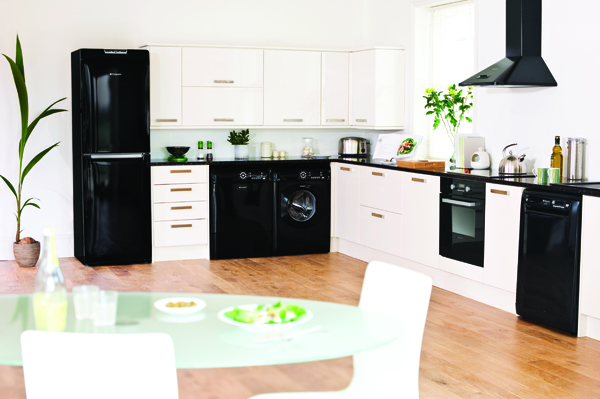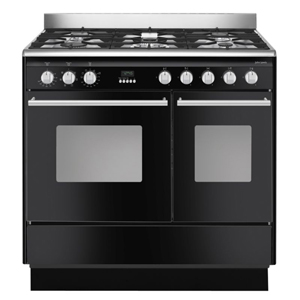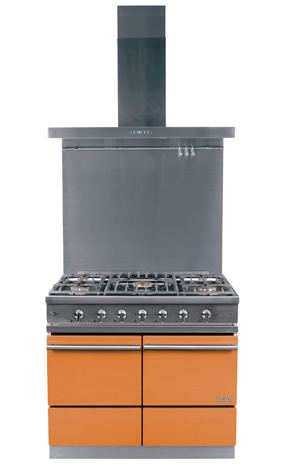Latest Interiors looks at the differences bewtween ovens, cookers & the Aga

Hot Stuff
Like a car, an oven is a major investment. Large or small, free-standing or fitted, the oven is the beating heart of a kitchen. And you need to be sure you’re spending your hard-earned cash on a cooker that’s built to last. This week, Latest Interiors lets you know just what’s cooking.
What’s in a name?
The term ‘oven’ refers to the central insulated chamber of a cooking appliance – ‘cooker’ refers to the whole appliance: oven, hob, grill and any other extras. Seemingly trivial, this distinction becomes important as soon as you start planning cook and work space. Kitchens generally need to be planned around cooking, preparation and washing facilities, so size, location and functionality of your cooking appliance is key to making your space work.

Cookers
‘Slot-in’ cookers are an economic option if you have space and don’t want to re-model around something built-in. Whatever their power source, they usually include hob, grill and oven, and literally slot straight in to a cooker-sized space between units. For a more integrated look, many people opt for a combination of separates – a hob and extractor hood that co-ordinate with units and worktop, as well as a separate integrated oven unit. ‘Range’ style cookers are an increasingly popular alternative. Styled like old-fashioned cooking ranges, these are around a third wider than standard cookers, and free-standing ones can be planned into integrated kitchens.

Ovens & hobs
Local fuel availability might impact on your choice of oven. In a conventional electric oven the thermostat controls the heat in the middle, and the oven will be a little hotter at the top, and cooler at the bottom. An electric fan oven circulates heat and air, keeping the cooking space evenly heated. Gas ovens are heated by a flame at the base, with a fan to circulate the heat. Some ovens – whether powered by gas or electricity – are multi-function, with oven, grill, fan and rotisserie capacity. Double ovens – where the central compartment is divided into two or more completely separate sections, can be an economical choice as they allow you to use less energy for smaller meals and to cook items at different speeds.
Like ovens, hobs can be powered by gas or electricity. Gas provides a visible, rapid heat that is easy to control, and is usually cheaper than electricity. Practical considerations, like being easy to clean and responsive controls, make ceramic hobs another popular choice.
Oven alternatives
Ahh, the Aga. Great looking, and held in near-reverence by well-heeled households, but is it actually any good? An Aga is a stored-heat stove and cooker, first invented in 1929. It can be powered by a range of fuels, including gas, electricity, and bio-fuel, and although solid-fuel models have been discontinued, you can still buy refurbished originals. It can cook, heat water, and keep the kitchen snug and warm (great in winter, sweltering in summer). Unlike a traditional Rayburn range, though, they don’t heat the whole house. Agas are available in different sizes and configurations, but include hotter and cooler oven spaces, as well as hot plates for boiling and simmering. They can be a little idiosyncratic to cook with – no two Agas seem to be quite the same – but the combination of classic style and off-beat character make them perfect for Brighton kitchens.




















